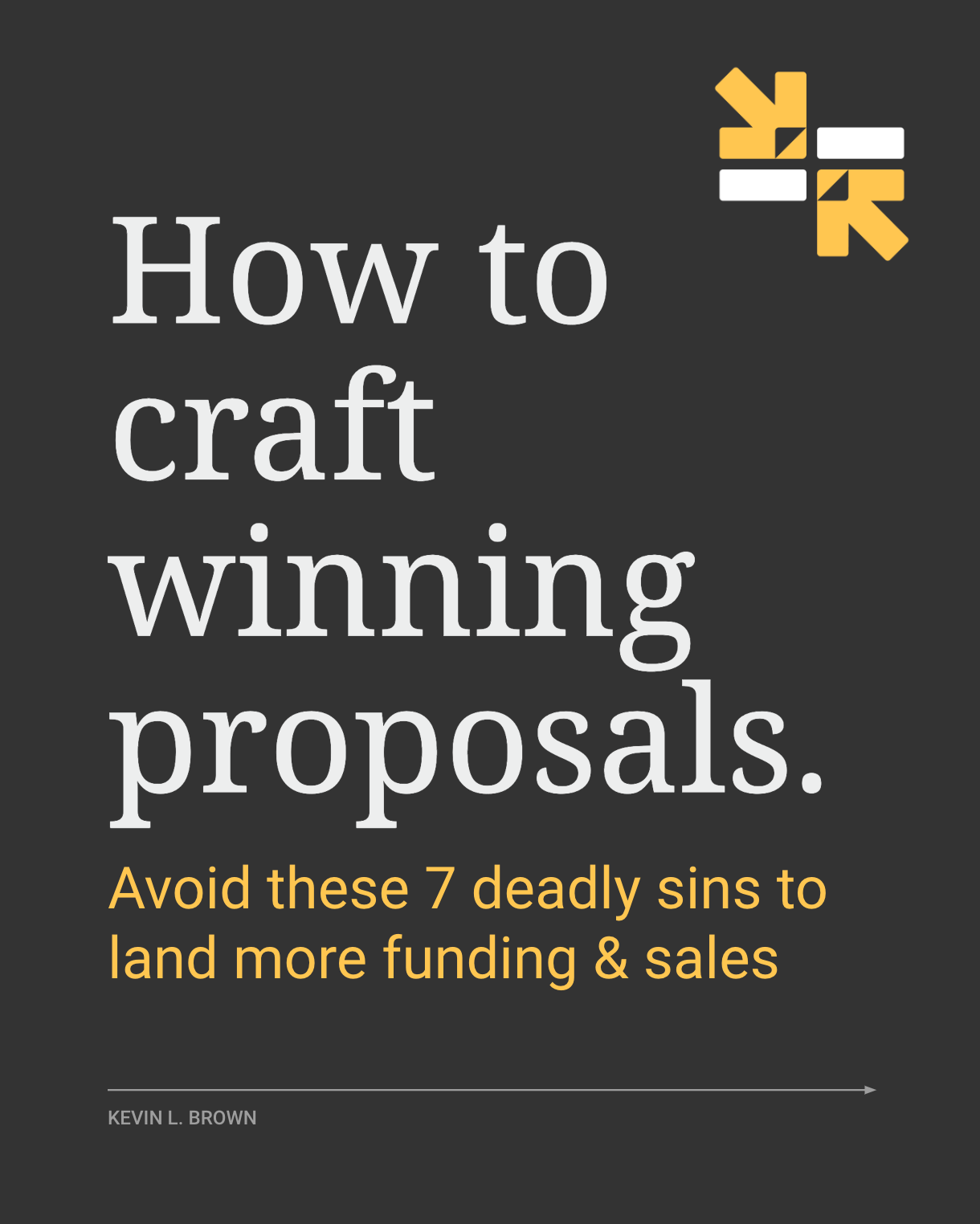How to craft winning proposals.
A bad proposal or grant application is like:
Serving a gourmet meal on a paper plate.
Painting a masterpiece on torn canvas.
Or playing poker with a losing hand.
It’s practically giving donors a reason to say no.
That’s why you must avoid the seven deadly sins of proposal writing. These issues could be costing you fundraising and sales.
Click here for a 90-second guide.
Then make it compelling, or lose the funding.
💪🏽💛
The daily bonus
If you master the NOSE structure above, your proposals will improve tremendously. As will your close rates. But if you want the cherry-on-top pro tips, read on.
Always review the proposal with the prospective buyer or funder. Don’t just send it over email and hope for a response. Instead, state that it’s a requirement: when a buyer requests a proposal, schedule a meeting to review the information. If she can’t commit to this, you shouldn’t spend your time crafting this document.
Count the number of times your company’s name appears. It ought to be a 3:1 ratio in favor of the buyer and community you serve.
Use plain language. Write the way you speak. Avoid jargon. Let yourself connect with your reader the same way you would if you were face-to-face. Relax. Go on a word diet. A confused mind always says no.
Always give three options. Because three options increase your win rate from 50% to 75%. And don’t forget to anchor high — you’ll increase revenue by at least 20%.
And finally, if you’re a larger organization with many contributors and proposal versions, it might be time to invest in a tech solution. Consider tools like Proposify or PandaDoc to streamline the workflow.
The double daily bonus
Per Sant’s survey of thousands of proposal evaluators, the number one answer to what they hate is “proposals that are too wordy.”
In a real-world experiment with a table full of documents, every single evaluator reached for the smallest proposal first.
Remember:
A proposal is a sales and communications tool — not an information packet. It should result from numerous discussions with the prospective funder or buyer.
There should be no surprises — either with money or the strategy you’re suggesting.
Rather, it’s a written review of your conversations.
And don’t forget: a proposal should represent an offer to solve an important problem, made between relative equals. The funder or buyer might be a lot bigger than your organization, but they’re the ones with a problem (even if the ‘problem’ is too much money to give away!). You’re the one with the solution. So it’s balanced, even with investors.
Sneak peek
Coming up in Monday’s newsletter:
40 AI tools for your brand.


